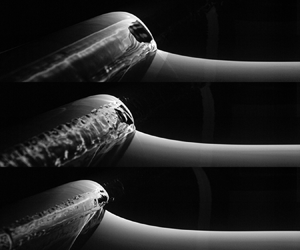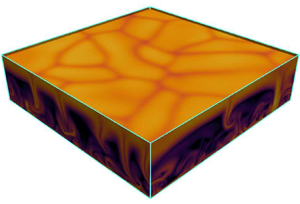Refine listing
Actions for selected content:
1419092 results in Open Access
The effects of surfactants on plunging breakers
-
- Journal:
- Journal of Fluid Mechanics / Volume 972 / 10 October 2023
- Published online by Cambridge University Press:
- 03 October 2023, R5
-
- Article
-
- You have access
- Open access
- HTML
- Export citation
Student Development Theory and the Transformation of Student Affairs in the 1970s
-
- Journal:
- History of Education Quarterly / Volume 64 / Issue 1 / February 2024
- Published online by Cambridge University Press:
- 03 October 2023, pp. 66-87
- Print publication:
- February 2024
-
- Article
- Export citation
AFH volume 64 issue 2 Cover and Back matter
-
- Journal:
- The Journal of African History / Volume 64 / Issue 2 / July 2023
- Published online by Cambridge University Press:
- 03 October 2023, pp. b1-b2
-
- Article
-
- You have access
- Export citation
William Allen Brown, Jr., 1934–2007: An Appreciation
- Part of
-
- Journal:
- The Journal of African History / Volume 64 / Issue 2 / July 2023
- Published online by Cambridge University Press:
- 03 October 2023, p. 200
-
- Article
- Export citation
Dyadic Clustering in International Relations
-
- Journal:
- Political Analysis / Volume 32 / Issue 2 / April 2024
- Published online by Cambridge University Press:
- 03 October 2023, pp. 186-198
-
- Article
-
- You have access
- Open access
- HTML
- Export citation
A critical review of status quo and future directions of owner dynamic capabilities: Dimensions and key factors
-
- Journal:
- Journal of Management & Organization / Volume 31 / Issue 4 / July 2025
- Published online by Cambridge University Press:
- 03 October 2023, pp. 1792-1813
-
- Article
- Export citation
Unlocking the sustainability of medium enterprises: A framework for reducing cognitive biases in sustainable performance management
-
- Journal:
- Journal of Management & Organization / Volume 30 / Issue 3 / May 2024
- Published online by Cambridge University Press:
- 03 October 2023, pp. 490-520
-
- Article
- Export citation
AFH volume 64 issue 2 Cover and Front matter
-
- Journal:
- The Journal of African History / Volume 64 / Issue 2 / July 2023
- Published online by Cambridge University Press:
- 03 October 2023, pp. f1-f4
-
- Article
-
- You have access
- Export citation
Compressible turbulent convection in highly stratified adiabatic background
-
- Journal:
- Journal of Fluid Mechanics / Volume 972 / 10 October 2023
- Published online by Cambridge University Press:
- 03 October 2023, R4
-
- Article
-
- You have access
- Open access
- HTML
- Export citation
“The Best Place to Help the Panthers Is at Home”: Dutch Black Panther Solidarity in Pursuit of a Revolution
-
- Journal:
- Journal of American Studies / Volume 58 / Issue 1 / February 2024
- Published online by Cambridge University Press:
- 03 October 2023, pp. 94-123
- Print publication:
- February 2024
-
- Article
-
- You have access
- Open access
- HTML
- Export citation
New method based on genetic algorithm and Minkowski fractal for multiband antenna designs
-
- Journal:
- International Journal of Microwave and Wireless Technologies / Volume 16 / Issue 3 / April 2024
- Published online by Cambridge University Press:
- 03 October 2023, pp. 466-477
-
- Article
- Export citation
A Mercantilist Brand: The British East India Company and Madeira Wine, 1756–1834
-
- Journal:
- Business History Review / Volume 98 / Issue 1 / Spring 2024
- Published online by Cambridge University Press:
- 03 October 2023, pp. 81-118
- Print publication:
- Spring 2024
-
- Article
- Export citation
Notes from the Editorial Team / Message de l’équipe de rédaction
-
- Journal:
- Canadian Journal of Political Science/Revue canadienne de science politique / Volume 56 / Issue 3 / September 2023
- Published online by Cambridge University Press:
- 02 October 2023, pp. 499-503
-
- Article
-
- You have access
- HTML
- Export citation
The acceptability of a peer-led intervention to promote healthy dietary behaviours among adolescents in the school-setting: a qualitative investigation – CORRIGENDUM
-
- Journal:
- Proceedings of the Nutrition Society / Volume 83 / Issue 2 / May 2024
- Published online by Cambridge University Press:
- 02 October 2023, p. 131
-
- Article
-
- You have access
- HTML
- Export citation
Three-dimensional buoyant hydraulic fractures: finite-volume release
-
- Journal:
- Journal of Fluid Mechanics / Volume 972 / 10 October 2023
- Published online by Cambridge University Press:
- 02 October 2023, A20
-
- Article
-
- You have access
- Open access
- HTML
- Export citation
High-resolution reconstruction of infiltration in the Southern Cook Islands based on trace elements in speleothems
-
- Journal:
- Quaternary Research / Volume 118 / March 2024
- Published online by Cambridge University Press:
- 02 October 2023, pp. 20-40
-
- Article
-
- You have access
- Open access
- HTML
- Export citation
Alcohol use polygenic risk score, social support, and alcohol use among European American and African American adults
-
- Journal:
- Development and Psychopathology / Volume 36 / Issue 4 / October 2024
- Published online by Cambridge University Press:
- 02 October 2023, pp. 1763-1775
-
- Article
-
- You have access
- Open access
- HTML
- Export citation
For the Sake of the Ingroup: The Double-Edged Effects of Collectivism on Workplace Unethical Behavior
-
- Journal:
- Business Ethics Quarterly / Volume 34 / Issue 4 / October 2024
- Published online by Cambridge University Press:
- 02 October 2023, pp. 570-604
- Print publication:
- October 2024
-
- Article
- Export citation
Reconstruction of topological graphs and their Hilbert bimodules
- Part of
-
- Journal:
- Proceedings of the Royal Society of Edinburgh. Section A: Mathematics / Volume 155 / Issue 2 / April 2025
- Published online by Cambridge University Press:
- 02 October 2023, pp. 514-539
- Print publication:
- April 2025
-
- Article
-
- You have access
- Open access
- HTML
- Export citation
Physical restraint in older people: an opinion from the Early Career Network of the International Psychogeriatric Association
-
- Journal:
- International Psychogeriatrics / Volume 36 / Issue 11 / November 2024
- Published online by Cambridge University Press:
- 02 October 2023, pp. 995-1006
-
- Article
-
- You have access
- Open access
- HTML
- Export citation

















